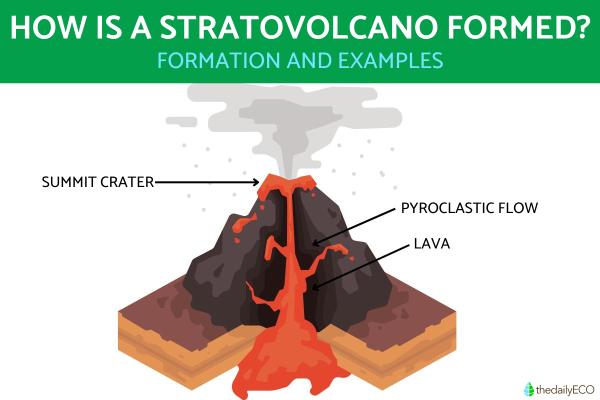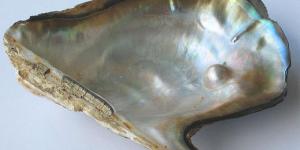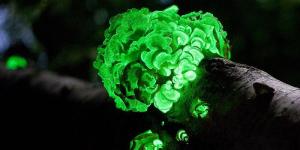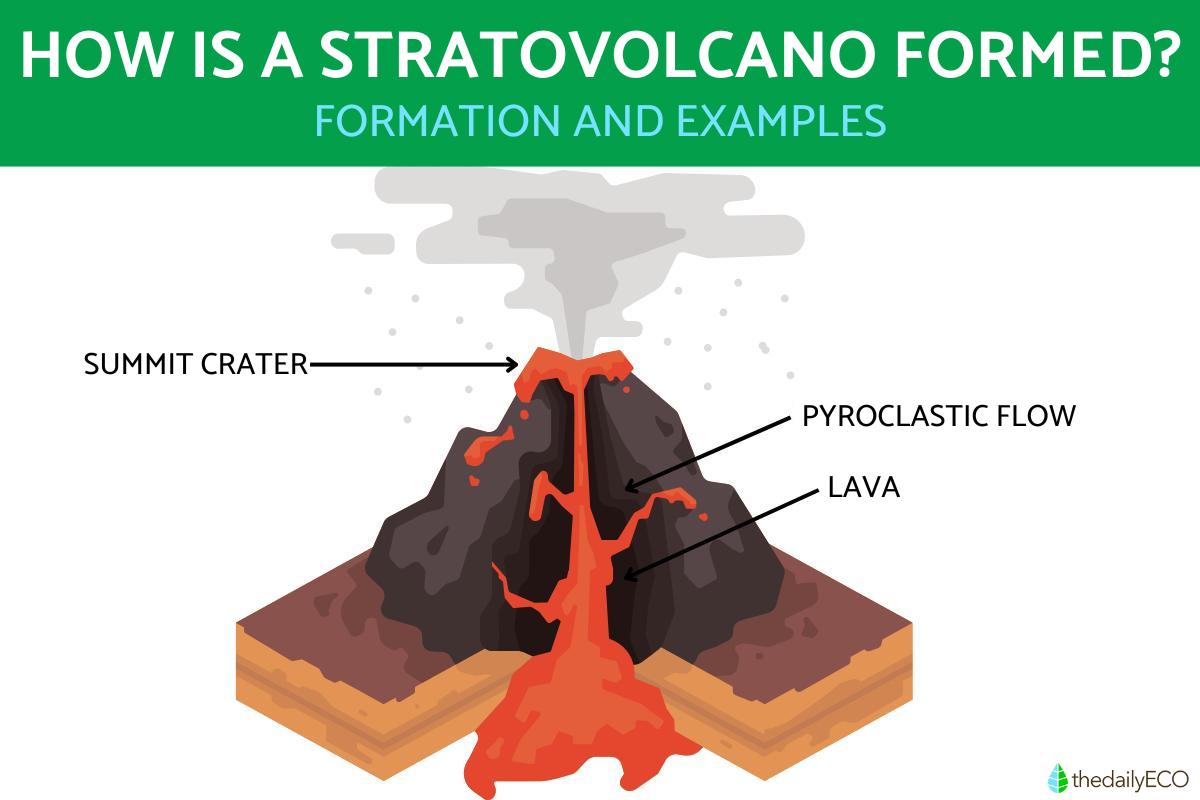How Does a Stratovolcano Form?


Volcanoes are geological structures that allow magma, gases and materials from the Earth's interior to escape through the surface. While all volcanoes carry out this basic process, there are different types of volcanoes. These can be classified by various factors, including shape, formation, type of eruption and composition of the magma. One of the best known and most studied is the stratovolcano. This is a type of volcano formed by the alternating accumulated layers of solidified lava, ash and other pyroclastic materials.
At thedailyECO, we discover more about these geological and geographical structures by asking how does a stratovolcano form? In addition to looking at its formation and characteristics, we look at how they differ from other volcanoes and where you can find active stratvolcanoes around the world.
What is a stratovolcano?
A stratovolcano is a type of volcano characterized by its conical shape and great height. It forms from the accumulation of multiple layers of volcanic material, including solidified lava, volcanic ash and other materials ejected during eruptions over time. These overlapping layers give rise to its robust and steep structure. They are very different from other types of volcanoes, such as shield volcanoes which are lower and less steep.
This type of volcano is usually found at convergent tectonic plate boundaries. This is where one plate slides beneath another in a process known as subduction. During this process, the sinking material of the Earth's crust partially melts due to the heat of the mantle, generating magma in the process that rises to the surface. An eruption occurs when sufficient pressure builds up.
Stratovolcano eruptions are known for being highly explosive and potentially very dangerous. The magma they contain is often viscous with a high silica content, preventing gases from escaping easily. As the gases build up, they increase the volcano's internal pressure until it eventually erupts violently. These explosions can eject rocks, ash and toxic gases to great heights. They can also trigger secondary phenomena such as pyroclastic flows or lahars.
Lahars are a type of volcanic mudslide. You can learn about the other types of mudslides in geography with our related guide.

How does a stratovolcano form?
Stratovolcanoes have a series of distinctive features that differentiate them from other types of volcanoes. These characteristics are related to their shape, composition, type of eruption and geographic location. We look at how a stratovolcano is formed by looking at its key characteristics:
- Layered structure: successive eruptions emit different types of material, alternating layers of lava, volcanic ash, pumice and other pyroclastic materials. The basic formation occurs when these materials accumulated in cooled layers.
- Conical and symmetrical shape: this layering of volcanic of both fluid and viscous material results in a characteristic conical shape with steep slopes. They appear almost perfectly symmetrical, with younger stratovolcanoes being the most symmetrical as they have not yet been eroded by time.
- Considerable altitude: since it requires continuous eruptions over time to form a stratovolcano, they can build to great heights, often being as high as 2,000 to 3,000 meters above sea level.
- Explosive eruptions: the material erupted by stratovolcanoes is high in silica, resulting in a gas-rich volcano. This allows for explosive eruptions which can send the material long distances, something else which forms their distinct structure.
- Presence of a summit crater: these gas-rich eruptions allow pressure to build up beneath the surface until eventually sending the magma and other materials through a central vent with great force. This results in a summit crater being formed around the vent.
- Pyroclastic flows and lahars: due to their violent eruptions, stratovolcanoes often produce pyroclastic flows. These are fiery clouds of gases and rock fragments that race down the slopes at high speed, destroying everything in their path. When ash mixes with water, they can create the lahar mudslides we mentioned earlier.
- Location in volcanic belts: most stratovolcanoes are located in subduction zones along volcanic arcs, such as the so-called ‘Pacific Ring of Fire’ which surrounds the Pacific Ocean basin.
Stratovolcanoes can remain active for thousands of years, alternating between periods of inactivity and eruptive episodes. It's not uncommon for decades or even centuries to pass between eruptions, which sometimes gives a false sense of security to those living nearby.
While volcanos are formed by factors such as the nature of their eruptions, you can learn more about how volcanoes erupt with our related guide.
Examples of active stratovolcanoes
You may not be aware that some of the most famous volcanoes on the planet are types of stratovolcano. Since they have some of the most violent eruptions, it is logical that they create some of the most memorable eruptions in history. Some key examples of stratovolcanoes are:
- Mount Etna (Italy): located on the island of Sicily, Etna is one of the most active stratovolcanoes in the world. It is also the highest in Europe outside the Caucasus, with an altitude exceeding 3,300 meters above sea level. Its frequent eruptions have been documented since ancient times. While many are relatively quiet, some have been very violent and devastating for nearby settlements.
- Mount Vesuvius (Italy): also in Italy, this one is near Naples. Vesuvius is most famous for an eruption in 79 AD which destroyed the Roman cities of Pompeii and Herculaneum. Although it has been dormant since 1944, it is considered an active stratovolcano, as it may erupt again.
- Mount Fuji (Japan): this is Japan's most iconic volcano, known for its perfectly conical shape and cultural significance. Although it hasn't erupted since 1707, it is classified as active due to its eruptive history and potential for reactivation.
- Popocatépetl Volcano (Mexico): located about 44 miles (70 km) from Mexico City, it is one of the most active stratovolcanoes in the Americas and has been erupting almost constantly since the 1990s.
- Fuego Volcano (Guatemala): located near the city of Antigua in southwestern Guatemala, Fuego Volcano is one of the most active in Central America. It has erupted numerous times in recent years, including a highly destructive one in 2018 that killed hundreds of people and caused extensive property damage.
Discover more about some of the most destructive types of volcanic eruptions with our article asking what is a supervolcano?

Difference between stratovolcano and other types of volcanoes
Although all volcanoes share the common trait of expelling magma from the Earth's interior to the surface, they do not all have the same shape, composition or type of eruption. We examine the differences between stratovolcanoes and other types of volcanoes in the following comparison:
Stratovolcano vs. shield volcano
Shield volcano
- Formed by the accumulation of very fluid lava that spreads over great distances before solidifying.
- Has a wide and flattened shape, resembling a shield laying on its side.
- Eruptions are relatively mild and not very explosive.
- Usually cover large areas of land, but with little vertical elevation.
Stratovolcano
- Formed by alternating layers of more viscous lava, ash and other volcanic materials.
- Has a symmetrical and conical shape, with steep slopes.
- Eruptions are violent and explosive, due to the accumulation of gases in the viscous magma.
- Tend to be at higher altitudes, although they occupy a smaller overall area compared to shield volcanoes.
Stratovolcano vs. cinder cone volcano
Cinder cone volcano
- Formed by moderately explosive eruptions that eject solid fragments into the air, which then fall around the crater.
- Has a simpler and smaller conical shape than stratovolcanoes, with a height rarely exceeding 300-400 meters.
- Its structure is composed almost exclusively of loose material, making it more fragile and erodible.
- Are common as secondary volcanoes in larger volcanic zones.
Stratovolcano
- Taller, more durable and with a more complex and solid internal structure.
- Accumulates both lava and pyroclast, creating a strong and durable structure.
- Activity can last for thousands of years, while cinder cones tend to be short-lived.
Stratovolcano vs. Lava Dome Volcano
Lava dome volcano
- Formed by the extrusion of extremely viscous lava, which barely flows and accumulates around the crater in the shape of a dome.
- Does not usually have a conical structure or large-scale violent eruptions.
- Lava can plug the crater and cause dangerous internal pressure, which is occasionally released in an explosive eruption.
- Usually form within or on stratovolcanoes, as a secondary dome.
Stratovolcano
- Contains multiple types of lava and has a more diverse eruptive history.
- Eruptions can include lava flows, ash explosions, pyroclastic flows and dome formation.
- Has a larger and more complex structure, the result of repeated eruptive phases.
You can discover another geological feature which can be formed by different types of volcanoes with our article asking what is a volcanic caldera?
If you want to read similar articles to How Does a Stratovolcano Form?, we recommend you visit our Facts about nature category.
- Department of Petrology and Geochemistry. (2013). Volcanoes and Volcanic Landforms. Atlas of Igneous Rocks. Complutense University of Madrid.
https://petroignea.wordpress.com/formas-de-yacimiento/depositos-volcanicos/edificios-volcanicos/ - EcoAvant. (2021). Types of volcanoes: classification and characteristics.
https://www.ecoavant.com/naturaleza/tipos-volcanes-clasificacion-caracteristicas_14621_102.html







